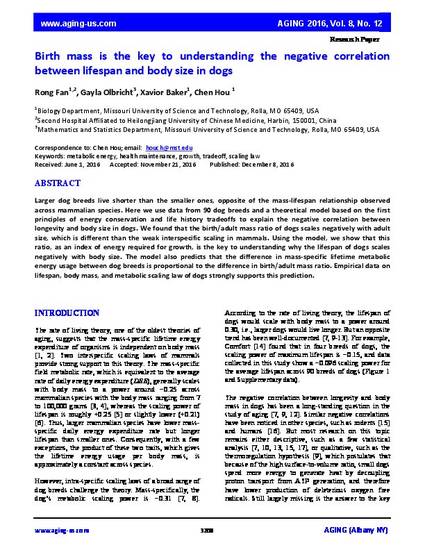
Larger dog breeds live shorter than the smaller ones, opposite of the mass-lifespan relationship observed across mammalian species. Here we use data from 90 dog breeds and a theoretical model based on the first principles of energy conservation and life history tradeoffs to explain the negative correlation between longevity and body size in dogs. We found that the birth/adult mass ratio of dogs scales negatively with adult size, which is different than the weak interspecific scaling in mammals. Using the model, we show that this ratio, as an index of energy required for growth, is the key to understanding why the lifespan of dogs scales negatively with body size. The model also predicts that the difference in mass-specific lifetime metabolic energy usage between dog breeds is proportional to the difference in birth/adult mass ratio. Empirical data on lifespan, body mass, and metabolic scaling law of dogs strongly supports this prediction.
- Growth,
- Health Maintenance,
- Metabolic Energy,
- Scaling Law,
- Tradeoff
Available at: http://works.bepress.com/gayla-olbricht/48/
